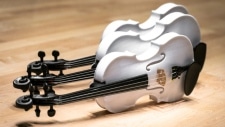The orchestra with printout violins
mainIt’s the Ottawa Symphony Orchestra, trying out instruments made from plastic with a 3D printer.


It’s the Ottawa Symphony Orchestra, trying out instruments made from plastic with a 3D printer.

Responding to Wigmore Hall’s withdrawal from its patronage,…

The leading Mexican conductor Enrique Batiz died yesterday…

From my monthly essay in The Critic: ……

After five years in charge, the chief conductor…

Session expired
Please log in again. The login page will open in a new tab. After logging in you can close it and return to this page.
Comments